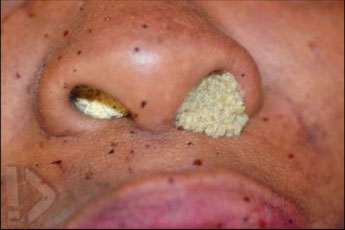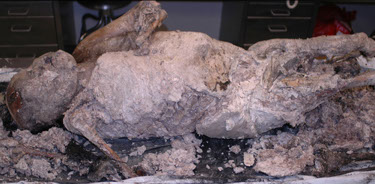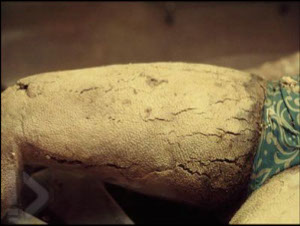The Autopsy
Autopsy authorization
The Medical Examiner is authorized by statute to perform an autopsy on any body within his/her jurisdiction, and therefore does not need further consent.
Medical autopsies may be performed in any case where authorization has been given by a member of one of the following classes of persons in the following order of priority: (1) The surviving spouse or state registered domestic partner; (2) Any child of the decedent who is eighteen years of age or older; (3) One of the parents of the decedent; (4) Any adult brother or sister of the decedent; (5) A person who was guardian of the decedent at the time of death; (6) Any other person or agency authorized or under an obligation to dispose of the remains of the decedent.
CAP recommends keeping wet tissue from forensic autopsies for 1 year
- for hospital autopsies, CAP recommends keeping tissue for 3 months
Electrolyte levels in decomposition
Postmortem vitreous potassium levels has been attempted to help determine the time of death but methods have been found to be invalid
Anything that accelerates decomposition, increases the level of vitreous potassium
Decomposition = Increased K+, Decreased Na+, Cl-, and Glu
Therefore if Na, Cl, or Glucose levels are high they are more significant than low values
Link to detailed chart of vitreous findings in different conditions:
http://emedicine.medscape.com/article/1966150-overview#aw2aab6b4
Rigor Mortis
“Stiffening” of the body after death due to postmortem muscle contraction. Begins in first in smaller muscles (fingers, jaw) then progresses to the limbs
Due to depletion of ATP with resultant development of a stable complex of actin and myosin , thus preventing muscles from relaxing
Maximal onset between 6-12 hours postmortem
Rigor mortis comes on much more quickly if decedent was exerting themselves before death (eg. drownings)
Persists for 36-48 hours (less in hot weather; longer in cold weather)

Using Fly Eggs to Estimate Time of Death
Generalized fly life cycle. They vary depending on the species and the temperature.
Eggs
present in clumps of up to 300
laying to hatching takes 1 day
Larva - 1st – 3rd instar stages
Takes ~ 4 days
Pre-pupa
migrates away from the corpse seeking a suitable pupation site, (usually in soil)
pre-pupa to pupa takes 4 days
Pupa
undergoes transformation from larval body form adult fly
pupa to emergence takes 10 days
Adult fly
feeds on protein from body fluids
lays eggs on corpse
emergence to egg laying takes 2 days
~19 days to get adult fly, and on ~day 21 they lay more eggs
Autolysis
- the breakdown of one's self by one's self; the aseptic breakdown of tissue
- maceration: "pure" autolysis in stillborn fetus; bc no bugs are yet in baby's gut, little to no putrefaction occurs; looks like a burn, does not smell
- sepsis, insects, and high ambient temperature speed up tissue breakdown; where low temps slow it down
- determining cause of death in decomposed body can be difficult/impossible (must distinguish pre-/postmortem injuries, look for tool marks, do x-rays, toxicology, other lab tests)
Putrefaction - breakdown of tissue by bacteria, usually in large bowel
- almost always starts as a little green patch in right lower abd
- later can see linear red discolorations as bacteria invade BVs
-- "marbling" caused by breakdown of BVs, at which point not possible to get blood sample
Skeletonization
Mummification - decomposition in very dry envt
- embalming can also preserve tissue c chemicals

Adipocere
aka Grave Wax?
- fat undergoes hydrolysis to free fatty acids by virtue of endogenous lipases and bacterial enzymes
- bacterial enzymes, principally from Clostridium perfringens, convert these free fatty acids to hydroxy fatty acids.
- gray wax-like appearance; has waxy feel
This form of postmortem change usually requires high humidity or water submersion

Burns
At 120 F, exposure for 5 min can cause 3rd degree burns
- at 150 F, will get 3rd degree burns after 2 seconds
